As photographic processes and camera technology evolved, so did the panorama.
One might hear reference to a panorama of a city skyline or a mountain range.
A true panorama is generally an image that covers about 160 degrees of view or wider.
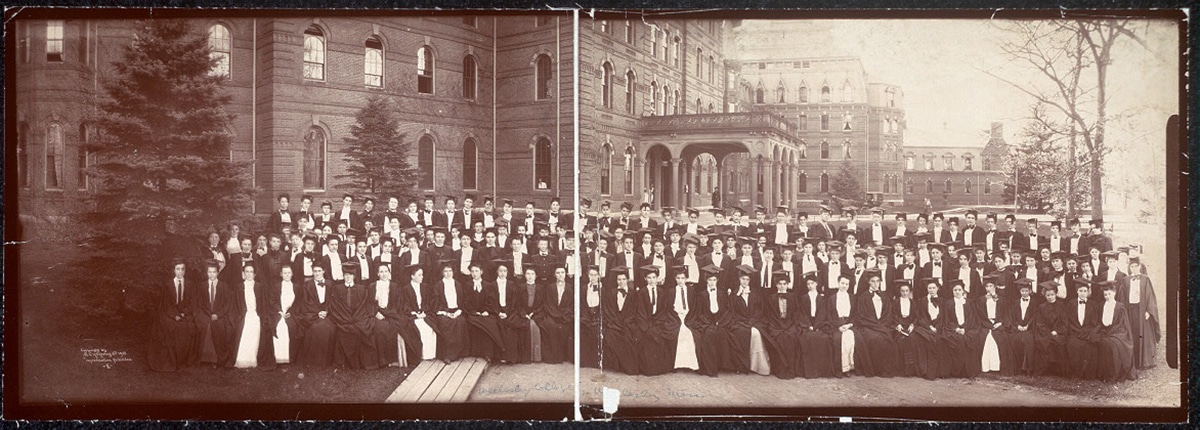
Wellesley College students, 1903, by E. Chickering & Co. (Photo:Library of Congress Prints and Photographs Division)
Western approach to the Acropolis, Athens, 1842.
Daguerreotype by Joseph-Philibert Girault de Prangey.
Taken on three plates by Williams & Rogers.
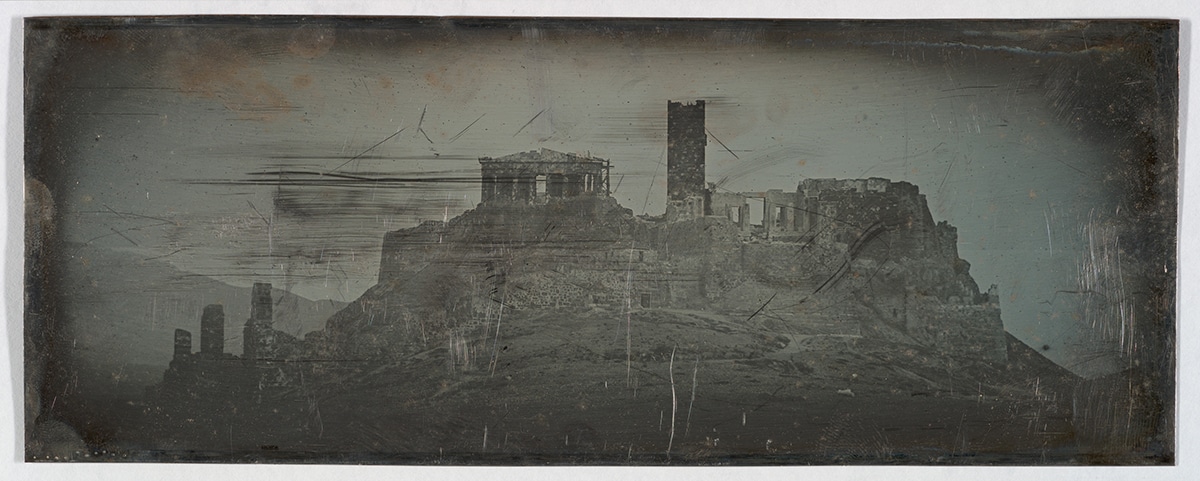
Western approach to the Acropolis, Athens, 1842. Daguerreotype by Joseph-Philibert Girault de Prangey. (Photo:The Metropolitan Museum of Art, Public domain)
(Photo:Library of Congress Prints and Photographs Division)
Thedaguerreotypewas the earliest widely-used photographic technique.
A copper sheet was made light-sensitive with a silver and chemical coating.
This plate was then exposed in a camera.
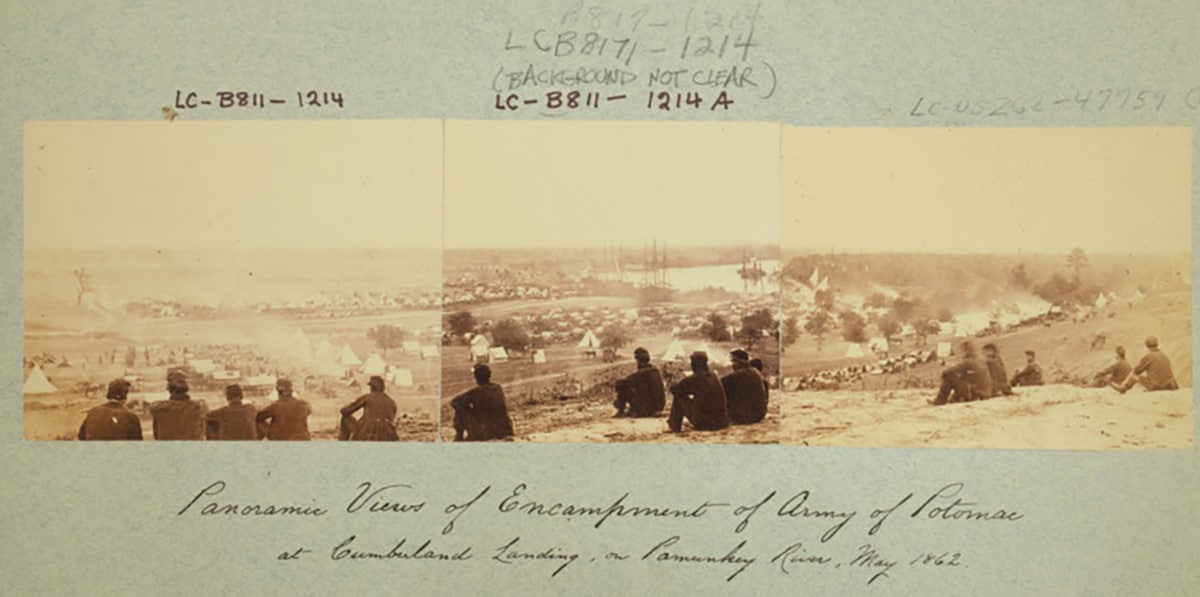
Panoramic views of the encampment of the Army of Potomac at Cumberland Landing, on Pamunky River, May 1862. Taken on three plates by Williams & Rogers. (Photo:Library of Congress Prints and Photographs Division)
As early as 1843, specific cameras began to be designed for panoramic photography.
These designs were rotatedor pannedby a manual crank to cover a wide field of view.
As the camera lens rotated, successive plates (or at times one long plate) were exposed.
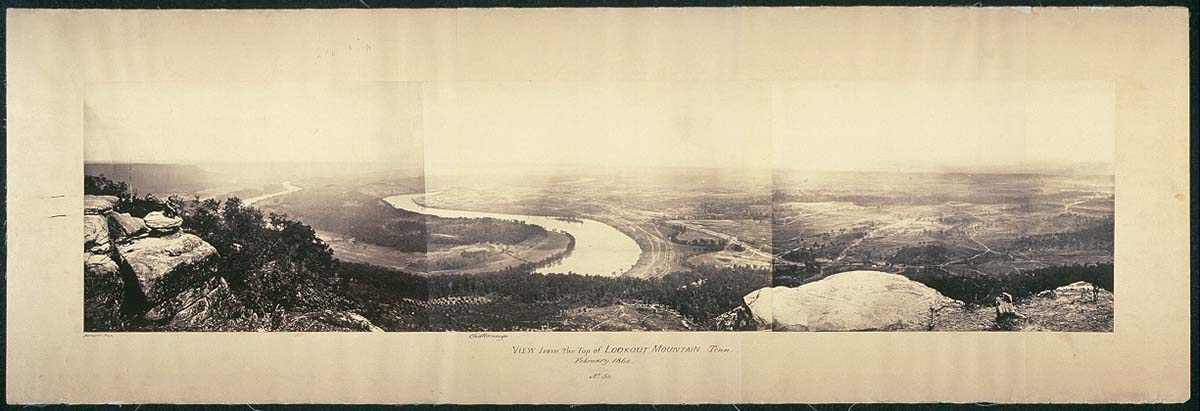
View from the top of Lookout Mountain, Tennessee, February 1864. Shot by George N. Barnard on three plates. (Photo:Library of Congress Prints and Photographs Division)
View from the top of Lookout Mountain, Tennessee, February 1864.
Shot by George N. Barnard on three plates.
Wet-plate photography was easier and cheaper.

Bathing Girl Parade, Seal Beach, California. Shot by M.F. Weaver, circa 1917. (Photo:Library of Congress Prints and Photographs Division)
Panoramic prints could now be easily reproduced.
Like with daguerreotype plates, however, the photographer still faced several challenges.
The distortion of lines and perspective was also largely unavoidable.
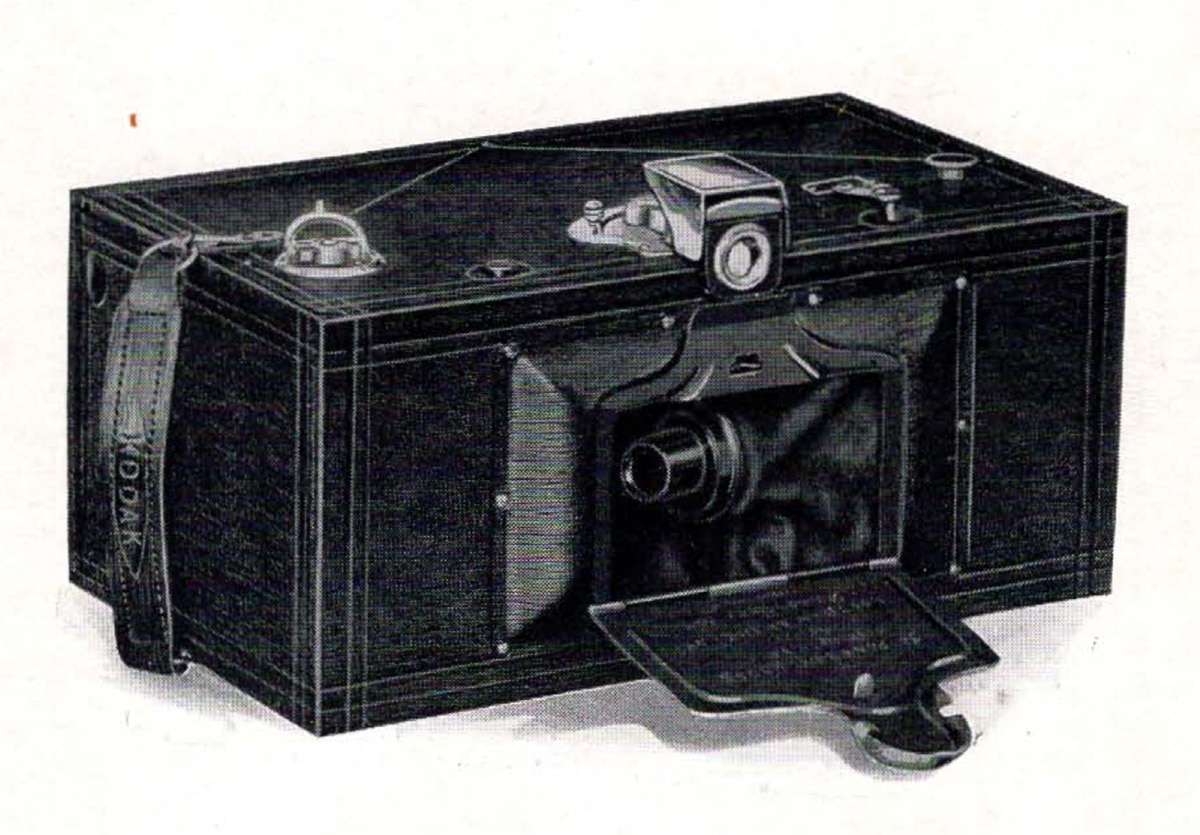
The Kodak No.3A Panoram, produced from 1926-28 but a similar design to the earlier models. (Photo:Wikimedia Commons, Public domain)
In the 19th century, photographers took on ambitious panoramas of everything from cityscapes to Civil War encampments.
Today, these images are valuable historical records of local landscapes.
The Possibilities of Flexible Film
Bathing Girl Parade, Seal Beach, California.

82 N. Latitude, panorama shot during the unsuccessful Ziegler polar expedition of 1903-1905. Taken on a Kodak No. 1 Panoram camera. (Photo:Wikimedia Commons, Public domain)
Weaver, circa 1917.
(Photo:Library of Congress Prints and Photographs Division)
Flexible photographic filmwas first developed in the 1880s.
Panoramic cameras using flexible film typically fell into two categories.
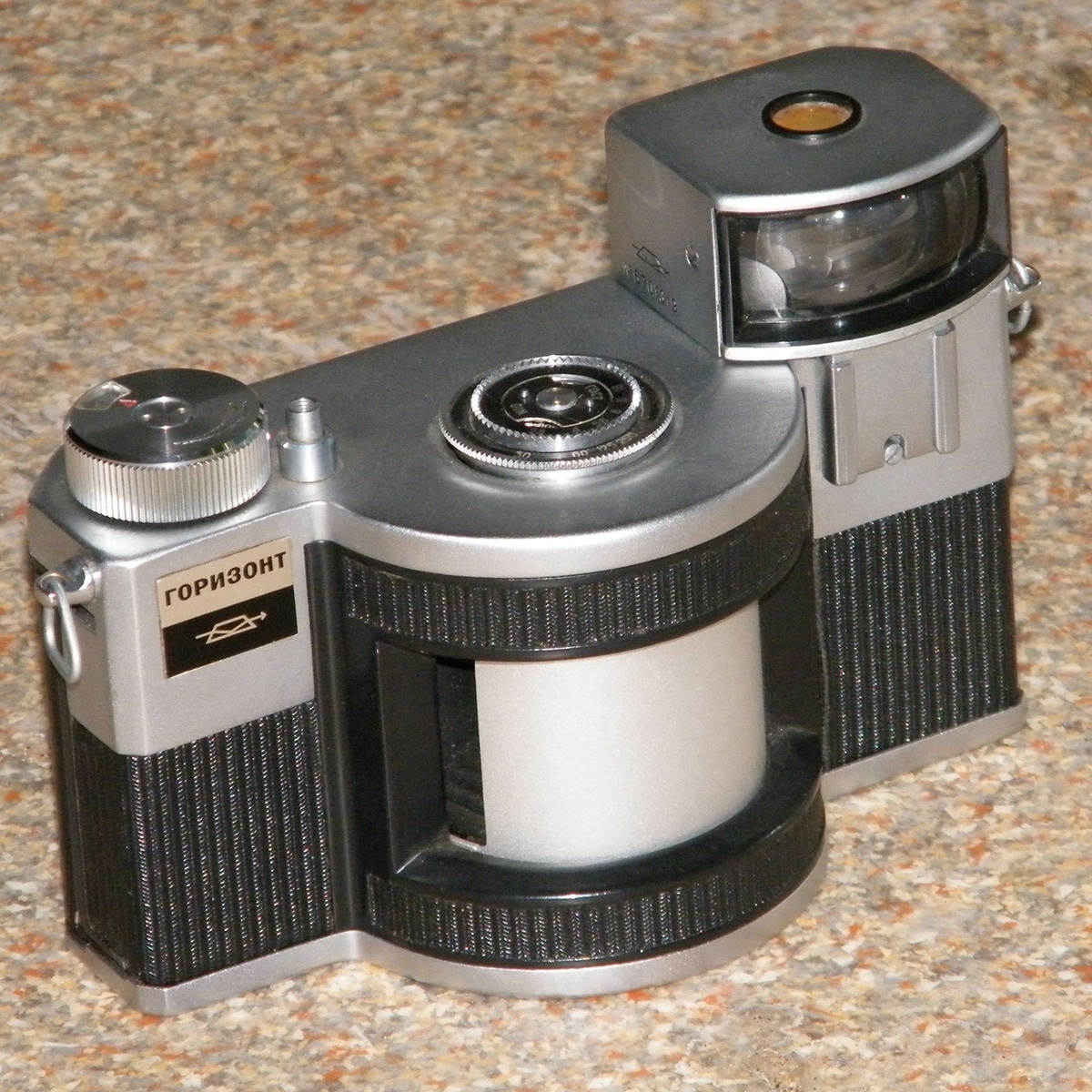
A Gorizont Russian camera, 1967. (Photo:Wikimedia Commons, Public domain)
With theswing-lens cameras, a lens rotated as it exposed a slit of image over stationary film.
The swing-lens camera came to be produced in multiple sizes as film was sold in a variety of widths.
Inside the camera, a spool held the film and advanced the frames over a curved plane.

An atrium photographed in 2003. Images from a Nikon Coolpix 5000, with a Kaidan pano head, and Manfrotto tripod. The image was stitched together using PTgui. (Photo: Rich Niewiroski Jr. viaWikimedia Commons,CC BY 2.5)
The lens would sweep across the film plane to expose the film.
This motion could be set at different speeds to match the lighting conditions (i.e.
the slower the speed, the darker the conditions).

Skiing in Switzerland in March 2019, shot in panoramic mode on an iPhone 6. (Photo: MADELEINE MUZDAKIS/My Modern Met)
TheNo.4 PanoramandNo.1 Panoramwere both being sold by 1900.
Though similar in design, the No.
4 offered a larger negative, a wider field of view, and cost more.

The Adirondack Mountains shot on “pano” mode in the fall of 2020, iPhone 11 Pro. (Photo: MADELEINE MUZDAKIS/My Modern Met)
Various models of the Panoram continued to be offered for sale through the late 1920s.
82 N. Latitude, panorama shot during the unsuccessful Ziegler polar expedition of 1903-1905.
Taken on a Kodak No.
With this larger film, professionals tended to use a camera known as theCirkut camera.
The Cirkut was a rotating panoramic camera where the film moved in concert with the lens.
It was capable of a full 360-degree view.
Introduced in 1904, the camera was bulky and required a tripod for use.
The camera was produced in different variations until 1949 by a subsidiary division of Eastman Kodak.
Frederick W. Brehmworked for Kodak and helped develop the Cirkut camera.
In his career as a professional photographer, he used the camera frequently.
In 1906, Brehm made a 360-degree panorama of the Washington, D.C., cityscape.
The panorama produced an impressive negative 20 feet long.
He photographed everything from soldiers to family reunions to baseball stadiums.
A Gorizont Russian camera, 1967.
(Photo:Wikimedia Commons, Public domain)
Over the 20th century, photography became increasingly accessible.
Eventually, 35mm film came to dominate the consumer market.
Plastic-bodied cameras operated on much the same principle as the early consumer swing-lens systems.
These included examples such as the Russian Horizon camera, which was first released in 1967.
Today, you could still experiment with compact 35mm panoramic camerasincluding theHorizon.
Digital Developments
An atrium photographed in 2003.
Images from a Nikon Coolpix 5000, with a Kaidan pano head, and Manfrotto tripod.
The image was stitched together using PTgui.
This image can then be flattened into a panorama.
A benefit to this system is the ability to capture the entire panorama at one moment.
The panoramic mode on a smartphone functions in much the same way as the antique cameras once did.
The person holding the phone must rotate around an axis until the desired field of view is achieved.
The camera digitally captures the image as it rotatesmuch like with a swing-lens camera.
Maybe friends can run behind you, appearing multiple times in one image.
Perhaps you’re able to capture a full 360-degree view in your favorite spot.
Panoramic mode is full of possibilities.
It’s time to experiment!
The Adirondack Mountains shot on pano mode in the fall of 2020, iPhone 11 Pro.
(Photo: MADELEINE MUZDAKIS/My Modern Met)